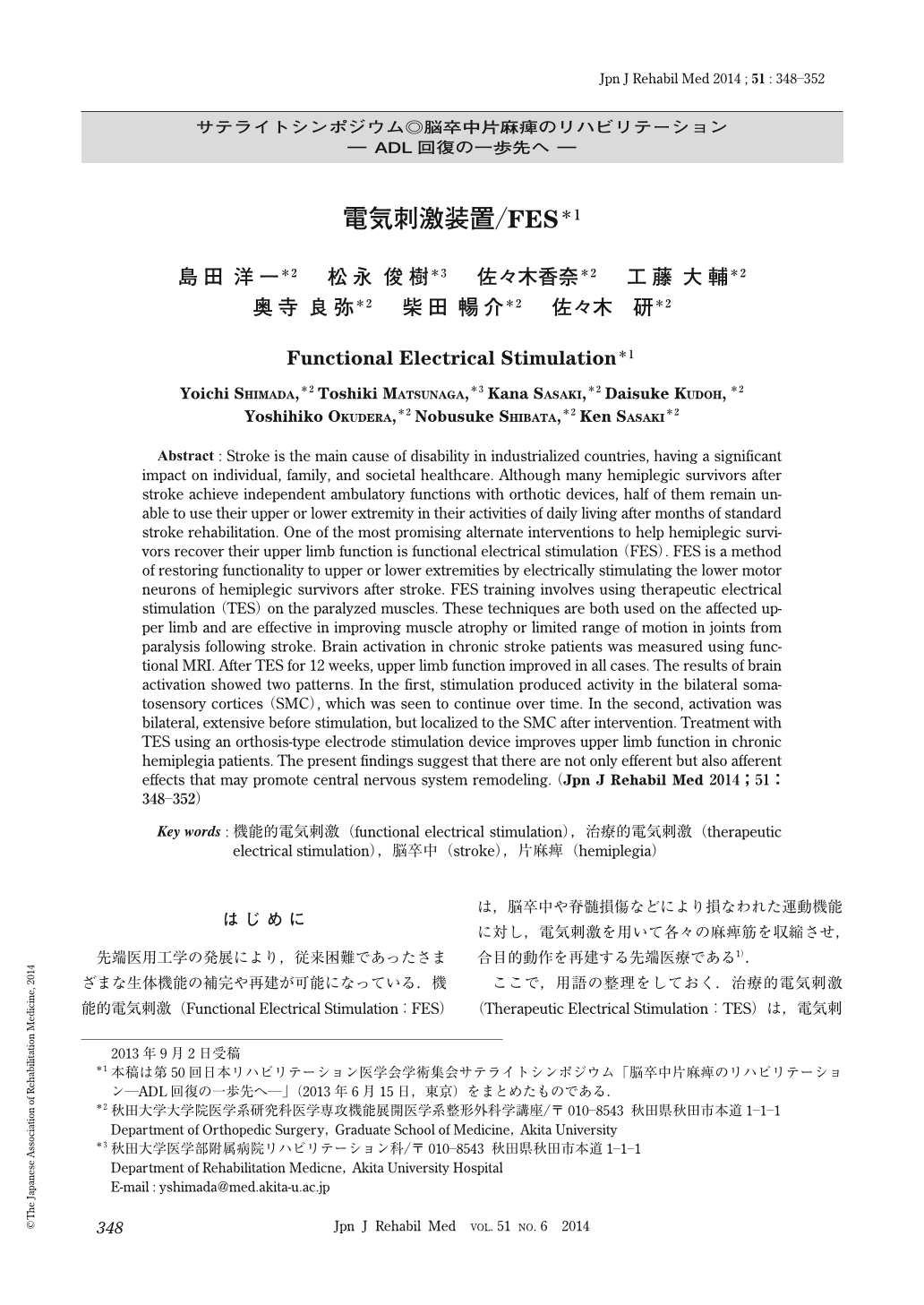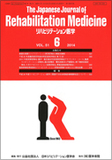Japanese
English
- 販売していません
- Abstract 文献概要
- 1ページ目 Look Inside
- 参考文献 Reference
はじめに
先端医用工学の発展により,従来困難であったさまざまな生体機能の補完や再建が可能になっている.機能的電気刺激(Functional Electrical Stimulation:FES)は,脳卒中や脊髄損傷などにより損なわれた運動機能に対し,電気刺激を用いて各々の麻痺筋を収縮させ,合目的動作を再建する先端医療である1).
ここで,用語の整理をしておく.治療的電気刺激(Therapeutic Electrical Stimulation:TES)は,電気刺激による痙性減弱と筋力増強により不全麻痺肢の随意性を改善させる治療である.この分野では,いわゆるTESをFESとして述べている報告が散見されるが,両者は厳密に区別するべきである.つまり,TESからFESへの移行は,そのシステムの複雑さ,制御方法の難易度,安全性確保の対策など多くの越えなくてはならない壁があり,一括して述べられるのもではないからである.そのため,FESに対する評価が必ずしも正当でなく,混乱を来す一因となっている.
リハビリテーション(以下,リハ)分野では,さまざまな機器応用がなされてきたが,従来のリハゴールを越えるための技術は乏しい.1961年Liberson2)らは,表面電極を用いて片麻痺性下垂足歩行を再建したのがFESの嚆矢である.様々な改良を加え,リハ分野における初の高進先進医療として「経皮的埋め込み電極を用いた機能的電気刺激療法」が国に認可され,Akita FES ProjectはFESの基礎・臨床研究に関し,国内外をリードする役割の一翼を担ってきた1〜5).さらに,2010年には表面電極刺激装置NESS H200TMとL300TMの薬事承認が得られ,多くの麻痺患者に臨床応用されている.本稿では,脳卒中片麻痺に対する我々のFES,TESの臨床応用について述べる.
Abstract : Stroke is the main cause of disability in industrialized countries, having a significant impact on individual, family, and societal healthcare. Although many hemiplegic survivors after stroke achieve independent ambulatory functions with orthotic devices, half of them remain unable to use their upper or lower extremity in their activities of daily living after months of standard stroke rehabilitation. One of the most promising alternate interventions to help hemiplegic survivors recover their upper limb function is functional electrical stimulation (FES). FES is a method of restoring functionality to upper or lower extremities by electrically stimulating the lower motor neurons of hemiplegic survivors after stroke. FES training involves using therapeutic electrical stimulation (TES) on the paralyzed muscles. These techniques are both used on the affected upper limb and are effective in improving muscle atrophy or limited range of motion in joints from paralysis following stroke. Brain activation in chronic stroke patients was measured using functional MRI. After TES for 12 weeks, upper limb function improved in all cases. The results of brain activation showed two patterns. In the first, stimulation produced activity in the bilateral somatosensory cortices (SMC), which was seen to continue over time. In the second, activation was bilateral, extensive before stimulation, but localized to the SMC after intervention. Treatment with TES using an orthosis-type electrode stimulation device improves upper limb function in chronic hemiplegia patients. The present findings suggest that there are not only efferent but also afferent effects that may promote central nervous system remodeling.

Copyright © 2014, The Japanese Association of Rehabilitation Medicine. All rights reserved.


